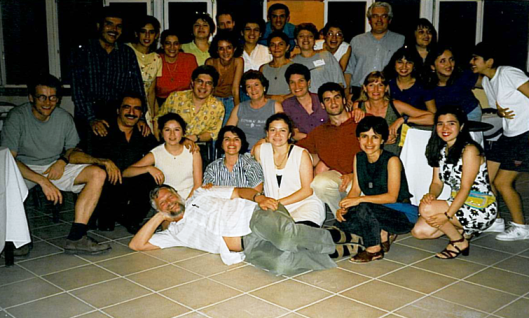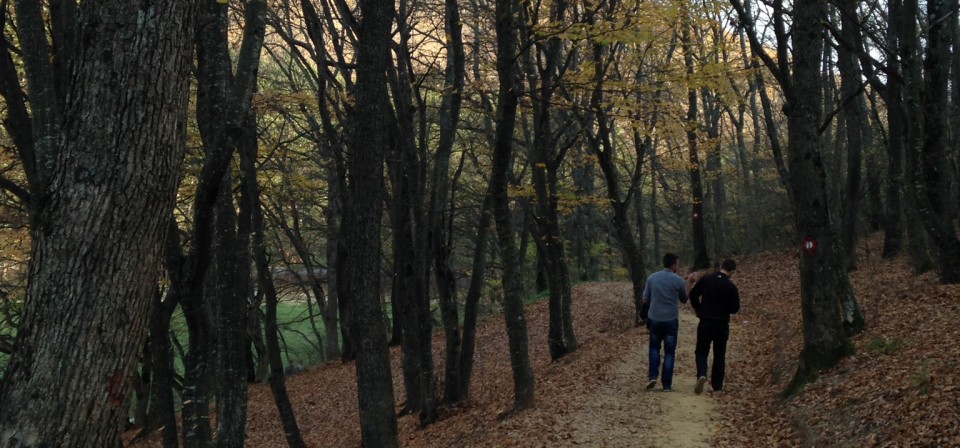It is not an exaggeration to say that I would not have become a UNDP Resident Representative if it wasn’t for Lars Franklin.
Who was Lars?
Here are the basic facts:
- UN Resident Coordinator and UNDP Resident Representative in Guatemala from 1995-2001.
- He served in the same role for a few brief months in Colombia, before dying at the all-too-young age of 55, the result of a tragic accident.
- His death in 2001 cut short a lifetime dedicated to peacebuilding, beginning in the 1970s with his work with the Swedish NGO Diakonia in El Salvador and Guatemala, followed by a 12-year stint in the Swedish Foreign Ministry overseeing Swedish cooperation in Central America.
I’ll never forget when Lars first walked into our conference room in the UNDP Guatemala Country Office on his first day on the job. We knew he was different. He was very tall, somewhat overweight, with a big white beard and a white hair and had a huge smile plastered on his face. He was also not alone. His wife was standing right beside him, smiling too.
At that very moment, I decided that Lars was probably the best thing that had ever happened to me in my professional life. (By the way, I still feel that way). All my career I had been searching for role models and mentors who were not only great managers and leaders but who were also nice to people. I wanted to believe that you could be a great leader and also a nice person but, until that point in my life, I hadn’t come across too many examples of this combination.
And so the learning began.
In that first meeting he taught us that one’s profession was not something separate from the rest of one’s life. His wife’s presence was his way of saying this to us: to live a life of integrity, you cannot be one person in the office and another one at home. And he wanted us to know, to truly know him, we also needed to know his family.
It was during that first meeting he talked to us about the importance of service. This was the first of many times he would remind us that his primary role as our leader was to serve us, to help us achieve our potential and make the most of our individual gifts and talents. And, in turn, our job was also to serve others.
He also made his first reference to the need for “animo”. In one Spanish word (with many meanings) he summed up his philosophy of work and life: “Cheer up! Have courage! Be thoughtful! Be connected! And, while you are at it, why not be happy too?”
Every day I spent with him I was moved by his profound humanity, humility and passion for bringing people together for a higher purpose. He wasn’t always smiles though. He had no patience whatsoever for hierarchy, mediocrity, or mindless bureaucracy. He took risks and encouraged us to take them as well. He created safe environments for his staff to speak their minds and where human rights advocates could sit down and plan the future with those who had tortured them. He saw how simple conversations could transform even the most divided societies, like Guatemala.
Here are a few Lars stories to illustrate what I mean:
- When, during the signing of the Guatemalan Peace Accords, in December 1996, the UN Secretary General Boutros Boutros Ghali left the ceremony early to take his private plane back to New York to attend to other priorities, Lars was furious. Afterwards, he sat down and wrote a personal letter to the incoming Secretary General, Kofi Annan, saying that he hoped that he would be more courteous than his predecessor and encouraging him to take an active and genuine interest in supporting the peace process.
- In April 1998, the Catholic Church released its report on the victims of the Guatemalan conflict, Nunca Más! Two days later, Bishop Juan José Gerardi, who oversaw the preparation of the report, was attacked in his garage and beaten to death. The next day I watched as Guatemalans from various walks of life came to the office to share their grief with Lars. After they left, Lars joined a group of us for lunch. He was smiling. We asked him how in the world he could smile given what had just happened. Very gently, he told us that it is during their moments of greatest despair that human beings are capable of seeing beyond their petty, daily problems and can begin to grasp the longer, larger processes at work. He said that Gerardi’s death was in fact the beginning of a new phase, that his killers would be brought to justice, and that this was the beginning of the end of impunity in Guatemala. His many friends had come today not just to grieve but to plan for a better future. Then he turned to us and said “And you too are a part of this better future – entonces, animo, mis amigos!”
- Even in the weeks just prior to his death, Lars was still teaching me. He had just begun the job and was returning from a field visit when his car was stopped by FARC guerrillas. They announced that they were kidnapping his travelling companion, a former Governor of the region. Lars immediately placed himself physically between the ex-Governor and the armed group, arguing with them for almost an hour to convince them that this was not a good idea, only desisting when it appeared that weapons would be fired.
This was his final message to me and to all of us who followed him and loved him: Don’t ever be afraid to fight for peace.
Not a day goes by that I don’t think of Lars and what I learned from him. In fact, when I turned 49 (the same age Lars was when he entered that conference room that day back in 1995), it was Lars’ voice that whispered in my ear “ok Andrew, it’s your turn now – Animo!”
And here I am, almost three years later, serving as RR in Kosovo, and, in my own small way, honouring Lars as I continue the fight for peace.

(Lars and UNDP-Guatemala Country Office Staff on retreat in 1998)

Dear Andrew, I’m Lars’s son. I was so touched by your blog about how Lars inspired you. I am so happy he meant this much for you. I also miss him!
I’m currently working for IFAD in Rome, focusing on East and Southern Africa. It would be fun to meet one day. Let me know if you come by Rome/Italy.
Congrats on being Res Rep in Kosovo. Sounds fun. I’m sure Lars would’ve been very proud of you. Good luck!!
All the best
Henrik
LikeLike
Dear Andrew!
So wonderful to read your blog about how much Lars meant to you, to all of us who came close to him, and the inspiration he still gives people, gives you. Those 36 years we were a couple, were 36 years of adventure, not always easy ones, but always in confidence and trust…and JOY. They made a strong imprint on me, and on the whole family, my three sons. And so it goes on. One start the circles to move , wider and wider, by dropping one single stone in the water. So the inspiration can be shared and spread, if you have COURAGE and positive SPIRIT. You can MOVE MOUNTAINS if you dare, and do it together with OTHERS, who also DREAM the same dream about a BETTER FUTURE.
We all need a better future, don’t we! But it doesn’t come by itself. There is HUGE WORK TO BE DONE, by all you marvellous people out there, like you and your collegues, and not the least, our familymembers. Greetings to you and your family! Hope to meet someday, maybe you pass Stockholm, or I pass Kosovo…
LikeLike